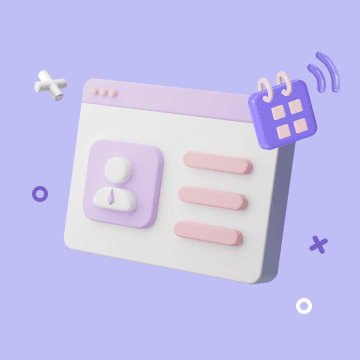
How a Small Company Can Use a Chatbot to Boost Growth
How a Small Company Can Use a Chatbot to Boost Growth
Being a small business owner undoubtedly comes with a set of challenges. You might constantly find yourself needing more time as you often single-handedly try to come up with a marketing strategy, develop your product, attract new leads, and at the same time retain your current customers. It can be overwhelming, to say the least.
But what if there was a way to automate some of these tasks and free up your time to focus on what you do best? Enter chatbots. Chatbots are revolutionizing the way businesses interact with their customers, and they can be a game-changer for small companies looking to boost growth. In this article, we'll explore how small businesses can leverage chatbots to their advantage.
The Power of Chatbots for Small Businesses
Chatbots have come a long way from being basic tools for answering basic questions. Today, they have evolved into sophisticated conversational agents that mimic human-like interactions. Here are some ways chatbots can benefit small businesses:
-
Improved customer service: Chatbots can handle customer queries and provide instant responses, ensuring that your customers are always taken care of, even outside of business hours.
-
Lead generation: Chatbots can engage with website visitors, qualify leads, and collect contact information, helping you generate more leads and grow your customer base.
-
Increased sales: Chatbots can guide customers through the sales process, recommend products or services based on their preferences, and even facilitate transactions, resulting in higher conversion rates and increased sales.
-
Time and cost savings: By automating repetitive tasks like answering frequently asked questions and providing basic information, chatbots can save you time and resources, allowing you to focus on more important aspects of your business.
-
Personalized experiences: Chatbots can gather data about your customers' preferences and behaviors, enabling you to deliver personalized experiences and build stronger relationships with your audience.
Implementing a Chatbot Strategy
Now that you understand the benefits of chatbots, let's explore how you can implement a chatbot strategy for your small business:
-
Identify your goals: Determine what you want to achieve with your chatbot. Whether it's improving customer service, increasing sales, or streamlining processes, having clear goals will help you design a chatbot that aligns with your business objectives.
-
Choose the right platform: There are many chatbot platforms available, but not all are created equal. Look for a platform that offers features like natural language processing, integration with your existing systems, and easy customization options.
-
Design a conversational flow: Map out the conversations your chatbot will have with customers, taking into consideration different scenarios and possible user inputs. Use a conversational flow builder to create a logical and engaging dialogue.
-
Train your chatbot: Teach your chatbot to understand and respond to user queries by providing it with relevant information and training data. Regularly review and update your chatbot's knowledge base to ensure accurate and up-to-date responses.
-
Monitor and optimize: Track the performance of your chatbot and analyze user interactions to identify areas for improvement. Use analytics tools to gather insights and make data-driven decisions to optimize your chatbot's effectiveness.
Conclusion
In today's fast-paced business environment, small companies need every advantage they can get to stay competitive and drive growth. Chatbots offer a powerful solution for automating tasks, improving customer service, and increasing sales. By implementing a chatbot strategy tailored to your business goals, you can leverage the power of AI to enhance the customer experience and achieve sustainable growth.
Remember, chatbots are not meant to replace human interaction but rather to augment and streamline customer interactions. By combining the best of both worlds, you can provide exceptional service while maximizing your business's growth potential.
So, why wait? Start exploring the possibilities of chatbots and see how they can transform your small business today. With the right chatbot strategy in place, you'll be well on your way to boosting growth and staying ahead of the competition.

Recommend Reading
- Outlook vs Gmail: Which Email Platform Reigns Supreme for Your Automated Workflow?
- Top RSS Reader Picks for 2025: Your Guide to Smarter Content Curation & Advanced Automation
- Choosing the Right AI Content Detector: A 2025 Comparison Guide
- Mastering My Apps: Unlock Productivity with Automation in 2025
- Elevate Your Presentations: Best Presentation Software Alternatives to PowerPoint in 2025
Recommend AI Automation Templates


